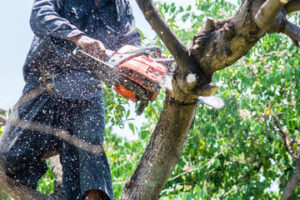The SEO grapevine has been abuzz with rumors that link bulding is dead. However, it’s important to understand that linking is still an essential component of SEO.
Using effective strategies to prevent common mistakes and monitor progress is key to optimizing link-building campaigns. These include creating quality content, conducting outreach and relationship building, and analyzing competitor backlinks strategically. Visit Website to learn more.
If you’re looking for an efficient and effective way to boost your website traffic, link building is a must-have. While it’s not a quick fix, it’s a powerful tool that can help you achieve your SEO goals and build brand awareness. However, it’s important to remember that link building is only one part of the SEO puzzle and shouldn’t be considered a standalone activity. Rather, it should be considered as a strategy that complements other marketing activities to increase search engine visibility and drive more quality traffic.
Creating links takes time and effort, so it’s essential to make sure that you have something of value to offer before you start. This can be a blog post, tool, research study, or other content asset. Then, you can approach the websites or individuals that may be interested in linking to your content. It’s also important to focus on high-quality links that will deliver a strong ROI for your business.
Some digital marketers take a “quick fix” approach to their link-building campaigns by blasting emails to thousands of potential link partners each week. While this method can work, it’s not a sustainable long-term strategy. Instead, you should invest your time in creating high-quality content and building relationships with other brands in your industry. This will help you establish a reputation as an expert in your niche and will allow you to secure valuable links that will benefit your business.
You can measure the success of your link building campaign by analyzing the domain authority of the websites that are linking back to you. It’s important to keep in mind that Domain Authority is only one indicator of the health and strength of your website, so you should use it in conjunction with other metrics like Brand Authority to get a more complete picture of your online presence.
To optimize the performance of your link-building strategy, it’s critical to have clear communication with your clients. Educating them about the process and setting realistic expectations from the start can help you avoid any surprises down the road. It’s also important to provide your clients with educational resources that will help them understand the intricacies of link-building, such as blog posts or infographics. This will help them understand the importance of your efforts and will increase their trust in you.
It’s not a quick fix
Using shortcuts like buying links is against Google’s guidelines and can have devastating consequences for your site. It is best to build links naturally and ethically, a process that can take time but is better for the long-term health of your business. One way to speed up this process is by implementing the broken link building technique, which involves reverse engineering resource pages to find any links that point to outdated content. Then, reach out to the publisher or owner of that page and offer your up-to-date content as a replacement.
It’s not a one-time thing
There is no one-size-fits-all solution when it comes to link building. You have to work with a professional who can assess your situation and create a unique strategy. They will also advise you on the timeframe of your campaign. A typical campaign lasts between 6 months and a year, but it depends on the industry and the specific website. The first results can usually be expected after this period.
Using link-building strategies like guest blogging and competitor analysis can help you build trust with Google and improve your rankings. They can also increase organic traffic to your site. However, you need to be patient and focus on quality rather than quantity.
The internet is constantly evolving, and a major part of this evolution is the change in search engine algorithms. These changes have caused a shift in the way that SEO professionals must operate. Link building has become more sophisticated and requires an understanding of the latest search engine trends. This can be difficult to keep up with, but it is necessary for a successful campaign.
Link-building is an important aspect of SEO and should be a long-term strategy for any business. It helps build trust with search engines and drives organic traffic to your website. However, it is not a quick fix, and it requires a lot of effort to get the best results.
While many businesses prioritize link building, it is still not as easy as it sounds. It requires a lot of time, effort, and money to obtain high-quality backlinks. In order to succeed, you must focus on building relationships and acquiring relevant links from other websites.
It is important to understand that the best links are those that blend seamlessly into the content. They are the kind of links that feel as though they were always meant to be there, whispering of authority and value. This is why strategic link placement is a delicate dance. It requires a personal touch, an eye for editorial quality, and a deep understanding of the ever-changing landscape of SEO.
There are a variety of methods for getting links, including online forums, Q&A sites (like Quora), and blog comments. However, it is important to avoid spamming these sites by only commenting on posts that are relevant to your industry. In addition, you should always try to provide value to the website owner before asking for a link. For example, you could write a blog post that answers questions that are frequently asked on the website, or you could create a resources page with helpful content.
It’s not easy
When it comes to SEO, many people think of link building as one of the most important parts, and rightly so. This technique is used to boost search engine rankings, increase site visibility, and build trust with visitors. It’s also a great way to get your brand in front of potential customers. Despite its importance, however, it’s not always easy to do. Using a quality link-building service can help you get the results you’re looking for.
Link-building isn’t a one-time project, and it takes time to see the results. It’s not uncommon for a campaign to last 6-months or even a year. Despite this, it’s worth the wait because you will achieve more sustainable results. However, don’t be tempted to take shortcuts, such as buying links. This is against Google’s guidelines and can be devastating for your website.
There are many different strategies for getting links, but they all have one thing in common: quality content. This means that you need to create high-quality, useful resources for other websites to link to yours. Some of the most popular strategies include guest posting, broken link building, the skyscraper technique, and infographic outreach. These methods can be difficult, but they’re also the most effective for long-term growth.
Another strategy is to use tools like Ahrefs to check for broken links and find similar resources on other sites. Once you’ve found a broken link, try to convince the editor that linking to your resource is in their audience’s interest. You can do this by offering something of value, such as a free tool, or providing a better version of the existing resource.
Using social media to promote your website is a good way to gain links and improve your SEO, but be careful not to spam. If you leave a lot of links in comments, for example, the Big Bad Wolf could blow them away. Moreover, you should only comment on blogs where your content is relevant.
Lastly, you should monitor your keyword rankings regularly to identify opportunities for improvement. Tracking your rankings helps you determine the impact of your link-building efforts on your overall rankings. This will allow you to make the necessary adjustments to your site in order to improve your performance.






 Paint
Paint


